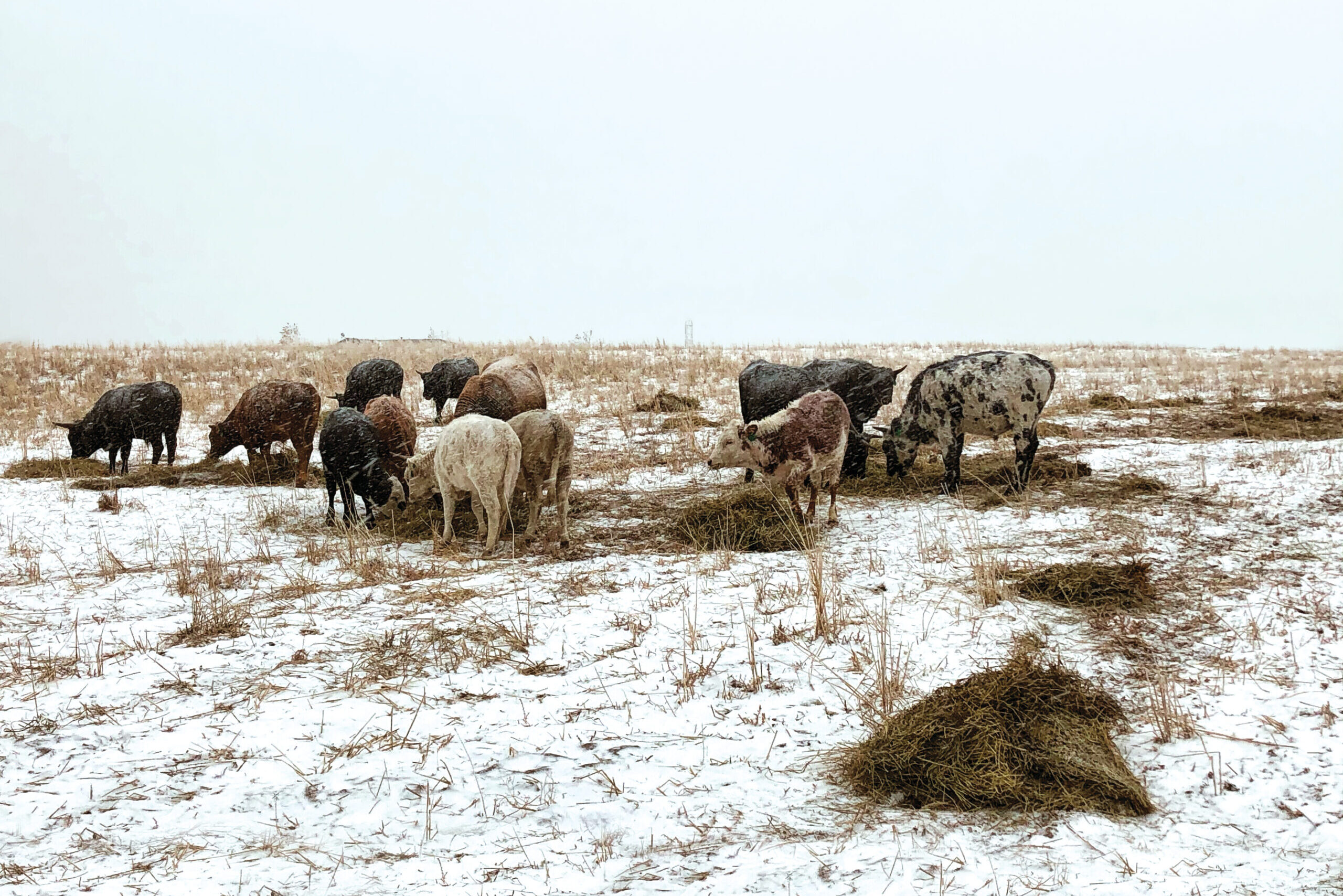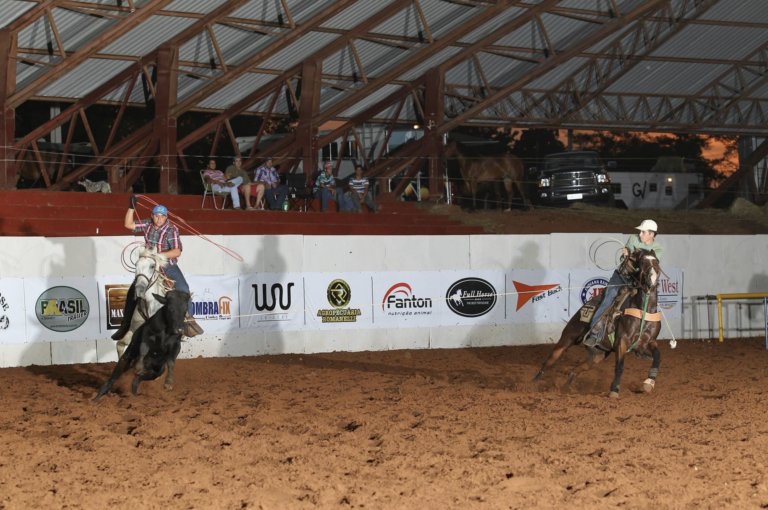Here in November, we’re many solid weeks into fall, and winter, as they say, is coming. For much of the roping milieu, that means escaping, even temporarily, to the sunny roping haven of Wickenburg. In reality, though, most must weather the brunt of winter, whatever that looks like across the continent. This year, especially, the burden is exponential, considering the price of hay, grain, gas and more.
Wintering cattle is hard work in any year and, by all counts, November is quite late to start planning for it—even more so in a year when, in many parts of the country, drought is leading to hay shortages and stories are being told of people mortgaging their properties to cover the high costs and get enough to make it through whatever winter has in store.
The good news is that cattle, for the most part, are a hardy lot. As these folks across the industry and the country will tell you, with a little strategy and a keen eye, the worst weeks of winter will pass by, the cattle will endure unscathed, and you will be free to focus on what matters most: Roping.
Southeastern Seaboard
(Virginia to Florida)
Covering a large swath of the eastern seaboard means the cattle in the care of East Coast Cattle Company’s owners Mason Johnson, Mitch Rogers and Jody Heyward need to adapt as they go. To minimize the ask of their cattle, they spend most of the year with some of the cattle kept in Virginia, some in North Carolina and some in Georgia. Then, for winter, the bulk of the herd moves south.
“We try to make it through the [NTRL] Finals at the end of January,” Johnson said. “Then we usually bend down to about 300 head.”
Sending the herd to winter in Georgia spares them the threat of frost, but still requires ample feed.
“We feed a ton of hay and feed,” Johnson said. “Their grass, it may last longer, but the nutrients in it are not near as plentiful as in the North.”
This year, the team found a rental property to make the best of the grass.
“It’s got irrigated pastures,” Johnson explained. “They may be able to cut those pastures down there up to five times, as long as it’s dry enough to put [the hay] up. Then, we have a feed trailer. We feed about 25 tons every three weeks. That’s what we feed in grain.”
Pacific Northwest
(Oregon)
“Oregon’s kind of bipolar,” said Brandon Beers, four-time NFR header and cattle supplier. “Lately, it’s been real, real dry. We haven’t had much for rain; very little moisture. It’s been pretty tough the last couple years.”
The drought has had an outsized impact on hay prices there.
“We used to be able to buy feeder hay for $150 a ton. It’s $300, $325.”
As a result, Beers will be sending his cattle south.
“The majority of my stuff will go to Arizona. Last year, we had 200-plus steers through the winter. We won’t keep but 30 or 40 head; just enough to maybe do a couple practices a week, and that’s just for people around Central Oregon.”
Beers has noticed a sharp decline in entries in his region, which only adds to the challenge of making the winter months pencil out.
“We tried doing winter ropings last year, and it wasn’t even worth having,” he said. “The few producers that we have and the few people that keep cattle, I understand it’s hard to support, but if we don’t start getting teams, there ain’t going to be nobody to have any ropings.”
The South
(Alabama and Tennessee)
“Some days out of the winter, we’ll get three or four inches of snow,” said cattleman, producer and roper Chip Phillips who operates Phillips Cattle Co. near the Alabama-Tennessee line. “The rest of the time, it’s just kind of wet.”
Because the warm seasons are hot and humid, the cattle in the South have a few unique challenges.
“In the spring and the fall, especially, you’ll have some respiratory issues,” Phillips explained. “This time of year, it gets a lot cooler on some of the creek bottoms. It gets really foggy, and the cattle have to adapt to it. I keep a close eye on them and I doctor when I have to doctor.”
With minimal snow and frost there, parasites remain a threat throughout most of the year, as well.
“I’m a firm believer in keeping my cattle wormed,” Phillips emphasized. “I try to worm my cattle once a month. ”
He also emphasizes feeding well.
“I grain my cattle once a day. I hand feed them. We’re pretty dry right now, but in a couple weeks, if we don’t start getting some rain, we’ll be putting hay out in every pasture. And hay is in shortage around here.”
Nonetheless, he is taking this year’s challenges in stride.
“It’s just the way it is,” he said. “You take the good with the bad.”
Southwest
(New Mexico)
This year, the next, or the last 10, Chris Francis is no fan of winter.
“I hate the wintertime,” said the PRCA header and manager of cattle operations at Mathews Land & Cattle in Las Vegas, New Mexico. “Some winters, it’ll be really, really cold and we’ll get a lot of snow. Other winters it’ll be mild and 40 or 50 degrees on a warm day and down to zero at night.”
Francis prefers the mild days as it means busting ice over shoveling snow, but those temperature swings can be hard on the cattle.
“The best thing is to see them,” Francis explained of their roping steers, which are penned, as opposed to the cattle they run out on pasture. “If one’s weak, we’ll try to peel him off and put him in a different pen, whether it be with a better shelter or less cattle, so that he gets more feed and a little more care. If you keep them closer, you can doctor them.”
More importantly, though, is taking care of your cattle before they get weak.
“A good thing a person can do, especially going into winter, is to be ahead of it. Put some lick tubs out. And I put CattlActive in the water. And good feed. It doesn’t matter what feed costs or hay costs or whatever because you’re going to spend it one way or another. Either you spend the money on feeding your cattle and taking care of them or you’re going to lose the money because your cattle die and aren’t strong enough to be roped. You’re going to pay for it now or later.”
Universal Cattle Care
(La Osa Veterinary Services)
According to large animal veterinarian Lindsey Eby, DVM, of central California, there are universal and widely recognized truths to cattle care, regardless of the region or season you’re in.
“There’s a common misconception that roping cattle don’t need shade or protection from the elements, and that’s 100% false,” she said, noting that providing as much as a windbreak can protect the cattle and your investment in them.
Also, good nutrition, she says, is paramount, but so is parasite management.
“Cattle that are itchy, whether it’s from flies or lice, are burning more calories, thus needing to consume more feed to maintain their condition.”
Finally, Eby suggests tapping your vet for insightful care recommendations.











